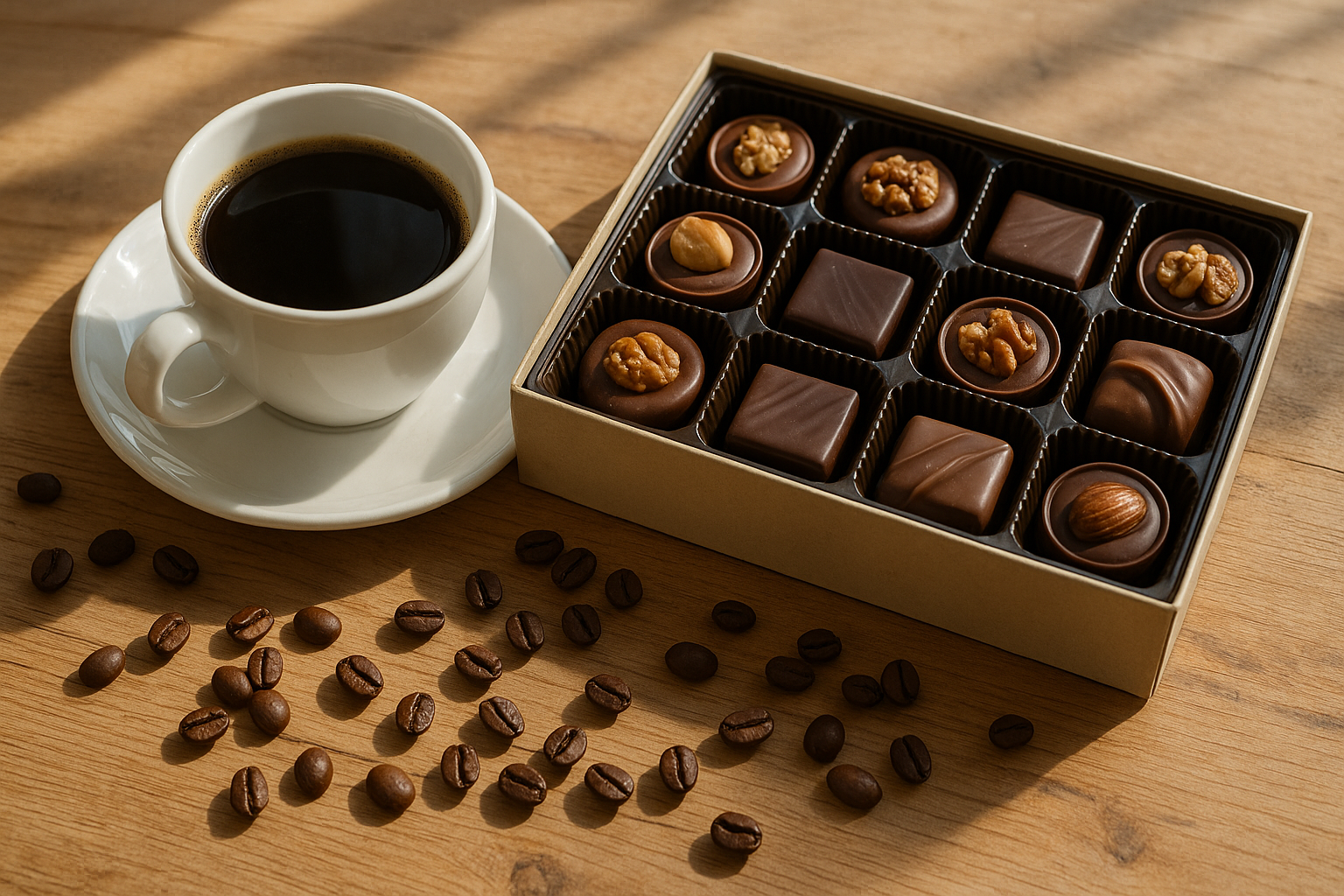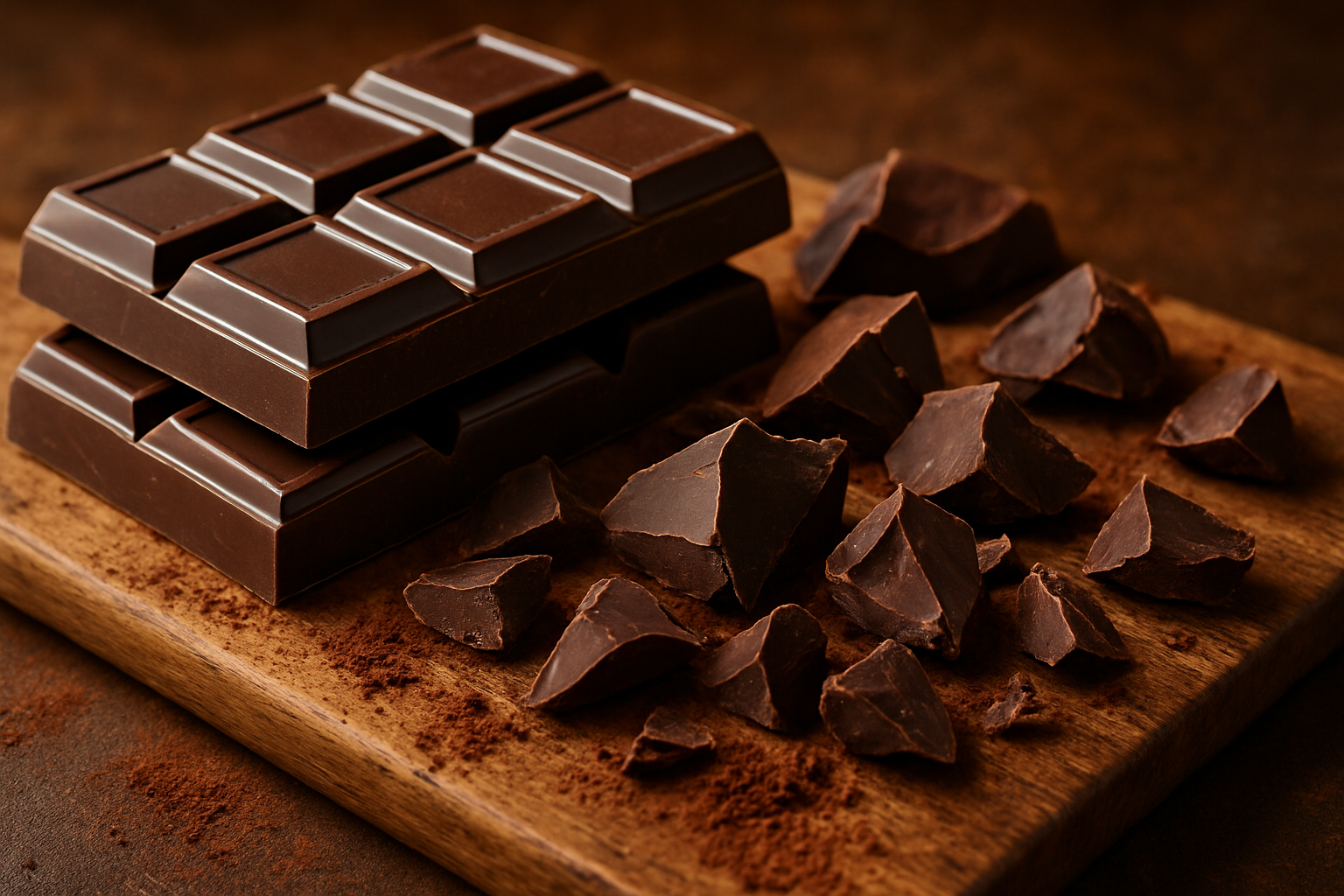Chocolate, that glorious indulgence, is a delicate delight. Unlike some pantry staples that seem to last indefinitely, chocolate is susceptible to changes in temperature, humidity, and even light. It can be a big plus if you know how to store chocolate properly. Doing so will make it last and, proper chocolate storage will keep chocolate fresh. Improper storage can lead to a host of undesirable transformations, robbing your precious treat of its smooth texture, rich flavour, and glossy sheen.
Fear not, fellow chocolate aficionados! This comprehensive guide will illuminate the secrets to creating the perfect sanctuary for your chocolate, ensuring it remains fresh, flavourful, and ready to be savoured whenever the craving strikes.
The Enemies of Chocolate Freshness:
To understand how to store chocolate properly, it's crucial to identify its nemeses:
-
Temperature Fluctuations: This is perhaps the biggest culprit. Extreme heat can cause the cocoa butter in chocolate to melt and then recrystallize, a process known as "bloom." This results in a whitish or greyish coating on the surface, affecting both appearance and texture, making it grainy and less smooth. Even gradual temperature shifts can negatively impact the chocolate's quality over time.
-
Humidity: High humidity can also lead to sugar bloom, where moisture draws sugar to the surface, forming a grainy white film. Furthermore, excessive moisture can encourage mould growth, rendering the chocolate inedible.
-
Light: Both natural and artificial light can degrade the fats and flavour compounds in chocolate, leading to a loss of aroma and a dull, sometimes even slightly rancid, taste.
-
Odours: Chocolate is surprisingly porous and can easily absorb strong odours from its surroundings. Storing it near pungent foods like onions, garlic, or strong cheeses will taint its delicate flavour.
-
Air: While less of an immediate threat than temperature or humidity, prolonged exposure to air can lead to oxidation, causing the chocolate to lose its freshness and develop off-flavours.
The Ideal Chocolate Sanctuary:
The key to preserving chocolate's quality lies in creating a stable, cool, dark, and dry environment. Here's a step-by-step guide to achieving this proper chocolate storage regime.
1. The Right Temperature:
-
The Sweet Spot: The ideal storage temperature for most chocolate is between 15°C and 18°C (59°F and 65°F). This range is cool enough to prevent melting and bloom but not so cold that it alters the texture or flavour.
-
Avoid Extremes: Steer clear of storing chocolate in direct sunlight, near heat sources like ovens or radiators, or in uninsulated areas that experience significant temperature swings.
-
The Refrigerator Question: While the refrigerator seems like a cool haven, it's generally not the best place for long-term chocolate storage due to its high humidity and potential for odour absorption. However, in exceptionally hot climates where maintaining the ideal temperature is impossible, the refrigerator can be a temporary solution. If you must refrigerate chocolate, take extra precautions (see point 4).
2. Controlling Humidity:
-
Keep it Dry: Aim for a humidity level below 50%. High humidity encourages both sugar and fat bloom.
-
Airtight Protection: Proper packaging is crucial for shielding chocolate from moisture in the air. There are many ways to achieve proper chocolate storage whilst keeping chocolate fresh. Airtight containers are many and easily obtained for storing.
3. Shielding from Light:
-
Darkness is Key: When deciding how to store chocolate remember, light is an enemy! Store chocolate in a dark place, away from direct sunlight and strong artificial light.
-
Opaque Packaging: Keep chocolate in its original opaque packaging or transfer it to an airtight, dark container.
4. Preventing Odour Absorption:
-
Isolation is Important: Store chocolate away from strongly scented foods as these can transfer to your treat. Again, airtight containers are ideal for proper chocolate storage and to keep your chocolate fresh.
-
Airtight Containers: Using airtight containers or resealable bags can help create a barrier against unwanted odours. If refrigerating, ensure the chocolate is very well sealed in an airtight container to prevent odour absorption and moisture condensation.
5. Proper Packaging:
-
Original Wrapping: The original packaging is often designed to protect the chocolate. Keep it intact whenever possible.
-
Airtight Solutions: For unwrapped chocolate or bars removed from their original packaging, wrap them tightly in plastic wrap or foil and then place them in an airtight container. This provides a barrier against air, moisture, and odours.

Long-Term vs. Short-Term Storage:
How to store chocolate can be determined in part by the length of time you intend to do so.
-
Short-Term (Days to Weeks): For chocolate you plan to enjoy within a few weeks, a cool, dark pantry or cupboard away from heat sources and strong odours is usually sufficient, provided the temperature remains relatively stable.
-
Long-Term (Months): For longer storage, the same principles apply, but extra care in airtight packaging is even more critical. If you live in a consistently hot or humid environment, careful refrigeration might be necessary, but remember the precautions about airtight sealing and allowing the chocolate to come to room temperature gradually before unwrapping to prevent condensation.
Reviving Slightly Bloomed Chocolate:
While bloom affects the appearance and texture, the chocolate is generally still safe to eat. You can often revive slightly bloomed chocolate by gently melting it and then allowing it to cool and solidify properly. This process redistributes the cocoa butter or sugar crystals. However, severely bloomed chocolate may have a noticeably degraded texture.
In Conclusion:
Treat your chocolate with the respect it deserves by providing it with a cool, dark, dry, and odour-free sanctuary. By understanding the enemies of chocolate freshness and implementing these simple storage strategies, you can ensure that every bite remains a smooth, flavourful, and utterly delightful experience. So, take a moment to create the perfect haven for your sweet treasures, and savour the pure bliss of perfectly preserved chocolate whenever the mood strikes. You are now suitably equipped for chocolate storage and have a good knowledge of how to store chocolate.








